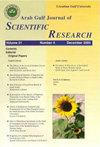Revisiting the puzzle of capital structure determinants: an empirical study based on UK firms
Q4 Business, Management and Accounting
引用次数: 0
Abstract
Purpose This study aims to measure impact of several firm-specific factors on alternative measures of leverage. The authors also aim to study impact of the subprime crisis on such associations. Design/methodology/approach The authors utilized an unbalanced panel data of 973 firm-year observations on 47 UK listed non-financial firms for the years 1990–2019. Book-based and market-based long-term and total leverage measures have been used as explained variables. The explanatory variables are profitability, size, two measures of growth, asset tangibility, non-debt tax shields, firm age and product uniqueness. Fixed effect and random effect models with clustered robust standard errors have been utilized for data analysis. To find the effect of subprime crisis, original dataset was split to create pre-crisis and post-crisis datasets. Findings The authors find that profitability significantly reduces leverage while firms having more tangible assets use significantly more debt in capital structure. Firm size and non-debt tax shield have statistically insignificant positive impact on leverage. Having more unique products reduces use of external debt, albeit insignificantly. Growth, when measured as market-to-book ratio, has inconsistent impact, whereas capital expenditure insignificantly reduces leverage. Age is found to be an insignificant predictor of leverage. After the subprime crisis, firms started relying more on internal fund instead of external debt, more particularly short-term debt. Having more collateral is gradually becoming more important for availing external debt. Research limitations/implications Data limitations restrict generalization of the findings. Originality/value This is one of the pioneering attempts to show how subprime crisis altered the theoretical domain of capital structure research in the UK.重新审视资本结构决定因素之谜:基于英国企业的实证研究
目的本研究旨在衡量几个公司特定因素对替代杠杆措施的影响。作者还打算研究次贷危机对这些协会的影响。设计/方法/方法作者利用了对47家英国上市非金融公司1990-2019年973家公司年度观察的不平衡面板数据。基于账面和基于市场的长期和总杠杆措施已被用作解释变量。解释变量是盈利能力、规模、两个增长指标、资产有形性、非债务税盾、公司年龄和产品独特性。采用具有聚类鲁棒标准误差的固定效应和随机效应模型进行数据分析。为了找出次贷危机的影响,将原始数据集拆分为危机前和危机后的数据集。作者发现,盈利能力显著降低了杠杆率,而拥有更多有形资产的公司在资本结构中使用了更多的债务。企业规模和非债务税盾对杠杆率的正向影响不显著。拥有更多独特的产品可以减少外债的使用,尽管效果不大。当以市净率衡量时,增长的影响不一致,而资本支出对杠杆的影响则不显著。年龄是杠杆的一个不显著的预测因子。次贷危机之后,企业开始更多地依赖内部资金,而不是外部债务,尤其是短期债务。对于利用外债来说,拥有更多的抵押品正逐渐变得越来越重要。研究局限性/意义数据局限性限制了研究结果的推广。这是展示次贷危机如何改变英国资本结构研究理论领域的开创性尝试之一。
本文章由计算机程序翻译,如有差异,请以英文原文为准。
求助全文
约1分钟内获得全文
求助全文
来源期刊

Arab Gulf Journal of Scientific Research
综合性期刊-综合性期刊
CiteScore
1.00
自引率
0.00%
发文量
0
审稿时长
>12 weeks
期刊介绍:
Information not localized
 求助内容:
求助内容: 应助结果提醒方式:
应助结果提醒方式:


